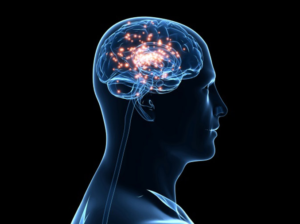 The application of robot-assisted lead implantation in nonhuman primate neuromodulation research has been deemed feasible, accurate, safe and efficient in a recent study published in Neuromodulation. With multiple methods validating the accuracy and safety of the technique, the authors, Guan-Yu Zhu and Ying-Chuan Chen from Beijing Tiantan Hospital, Capital Medical University (Beijing, China), further postulate that these findings can prospectively be beneficial to neurological studies.
The application of robot-assisted lead implantation in nonhuman primate neuromodulation research has been deemed feasible, accurate, safe and efficient in a recent study published in Neuromodulation. With multiple methods validating the accuracy and safety of the technique, the authors, Guan-Yu Zhu and Ying-Chuan Chen from Beijing Tiantan Hospital, Capital Medical University (Beijing, China), further postulate that these findings can prospectively be beneficial to neurological studies.
Whilst the therapeutic effects of deep brain stimulation (DBS) have been displayed throughout an array of diseases, including Parkinson’s disease, dystonia and epilepsy, the study investigators claim that the underlying mechanisms remain unclear; an issue they attribute to the lack of primate DBS models.
In comparison to traditional methods of drug administration and electrode implantation, the authors write that the “neurological robot” has many unique advantages in nonhuman primate stereotactic surgery. For instance, they put forward that anatomic registration can be achieved based on self-tapped screws, ensuring both accuracy and safety, while the six-freedom robotic arm ensures that the electrode can be implanted without a restricted entry angle and entry point.
According to Zhu, Chen, and colleagues, the multi-freedom robotic arm can—to an extent—solve the challenge of the discrepancy in head size between humans and monkeys. Thus, to investigate these proposed advantages, Zhu, Chen and colleagues selected 12 adult male rhesus monkeys (mean age: 6.1 years) for the study. They were randomly assigned, with six receiving DBS to the subthalamic nucleus, and six receiving DBS to the anterior nucleus of the thalamus. In addition, the authors note that three monkeys were randomly selected from the anterior nucleus group to undergo stereoelectroencephalography (SEEG) electrode implantation in the hippocampus, as they theorised that SEEG may be necessary to evaluate the outcome and mechanism of DBS in controlling seizures.
Zhu, Chen and colleagues highlight that the design of the surgical plan was based on the preoperative MRI images, using the robotic system. “The trajectories of the DBS electrode were designed according to the implantation trajectories in humans, multimodal image was used, and consideration was given to avoid their passage through sulci, blood vessels, vascular structures and screws”.
Mean Euclidean errors (those pertaining to distance) of the entrance and target points were calculated by postoperative image fusion in order for the authors to statistically observe the accuracy of the robotic system. Additionally, the correlation between entrance and target error, as well as the difference among various manipulations, were analysed. Time consumption was also recorded.
The mean Euclidean errors of the target point and entry point of DBS of the subthalamic nucleus were 1.05±0.54mm and 0.52±0.17mm, respectively, while DBS of the anterior nuclei of the thalamus elicited errors of 1.12±0.74mm (for the target point) and 0.58±0.24mm (for the entry point). Regarding the SEEG group, target and entry point errors were 2.68±1.03 and 1.47±0.63mm, respectively.
Interestingly, while significant differences were observed in both target and entry point errors between the DBS and the SEEG groups, the DBS group displayed superior accuracy. Moreover, the data suggest that entrance errors had a significantly positive correlation with the target errors in the subthalamic nuclei DBS group and the SEEG group. Lastly, the authors report that time consumption in robotic surgery was much shorter compared with traditional techniques, with no major complications occurring.
On discussion of the findings, Zhu, Chen, and colleagues write: “Owing to their high similarity to humans, experiments on nonhuman primates are ideal for neurological research, especially those relating to DBS and SEEG implantation.”
Although they propose that robotic stereotaxy is a novel technique in nonhuman primate studies, they suggest that a steep learning curve may exist. Yet, they add that as investigators become more familiar with the procedures of robotic surgery, “the new approach became an increasingly timesaving technique”.
Furthermore, in terms of future applications in nonhuman experiments, the study investigators write: “The ‘neurosurgical robot’ can definitely facilitate further research in DBS, SEEG, or even some newly emerging methods, such as ultrasound stimulation.” They add: “We can also use this method to implant a substance or quickly and accurately remove tissues from the target area. Additionally, nonhuman primate experiments could be applied to explore the potential new DBS targets, such as the pedunculopontine nucleus.”
Despite the fact that the authors reported favourable results, they note that the number of monkeys and subsequent targets was small, given the ethical limitations. Further, the robotic system is expensive, which inevitably might limit its use in animal research. Yet, Zhu, Chen and colleagues reiterate that in comparison to traditional techniques, robotic-assisted methods can facilitate more accurate lead positioning, while the use of more flexible adaptors for unique research purposes could reduce complications and save time.











